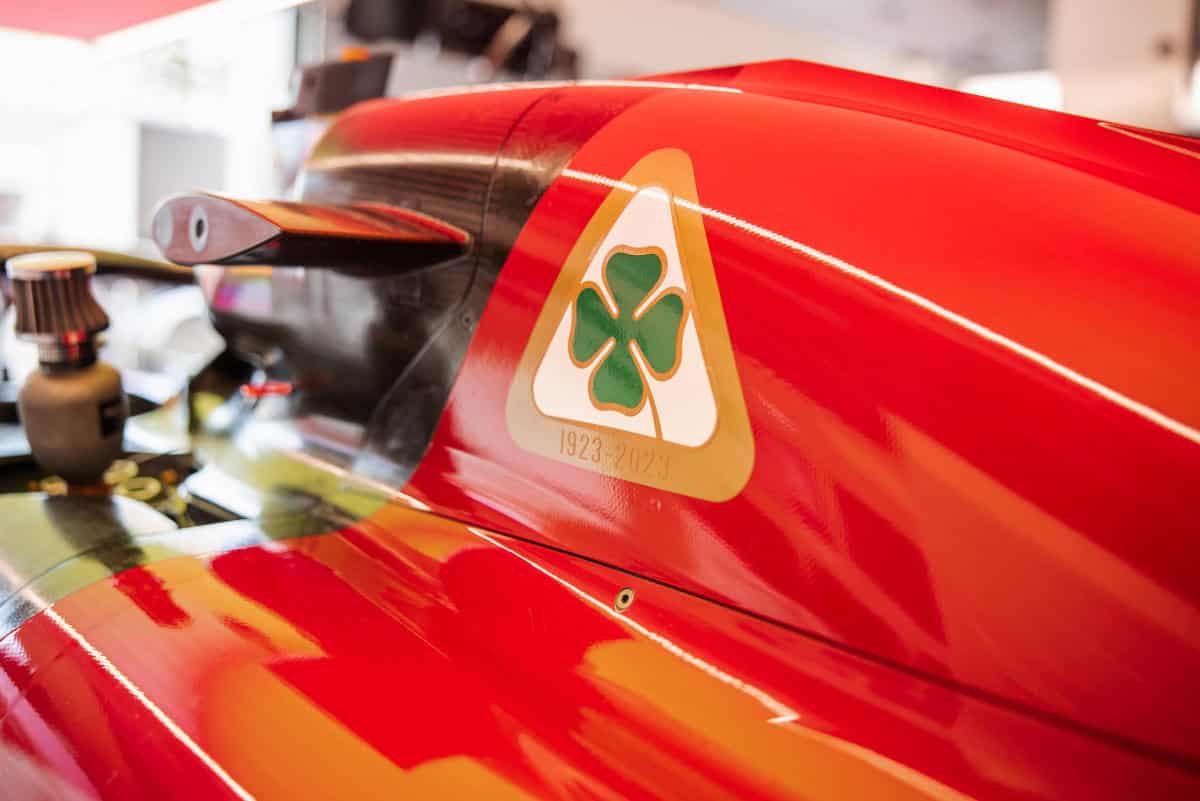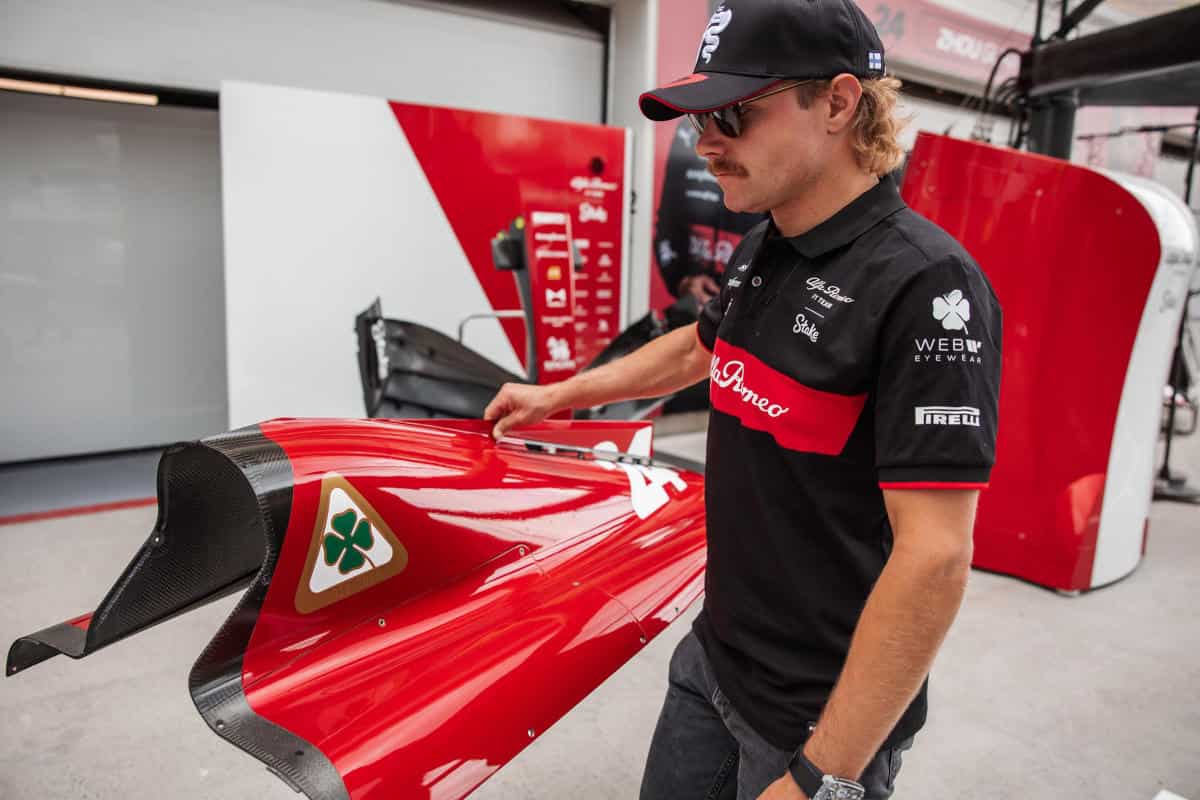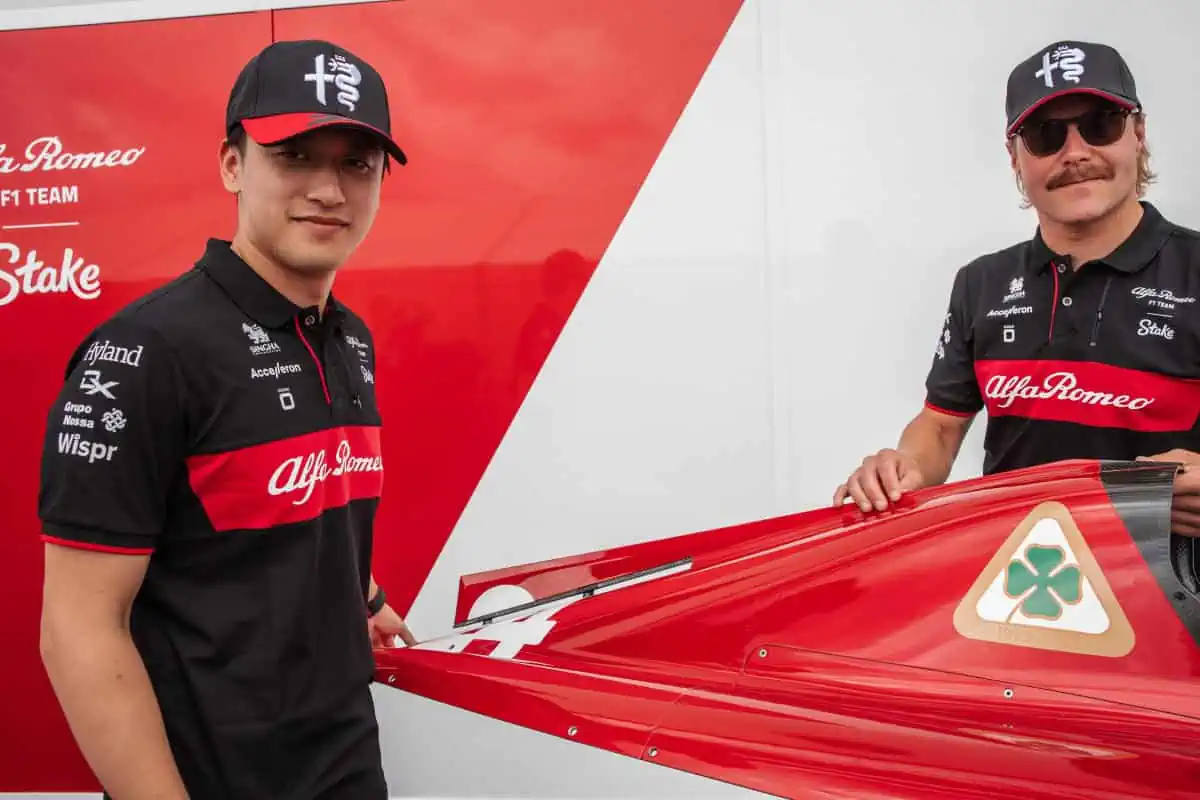At the Canadian Grand Prix, the livery of the C43 single-seater driven by Valtteri Bottas and Zhou Guanyu is emblazoned on part of the engine cover with the celebratory four-leaf clover created by the Centro Stile Alfa Romeo. The reinterpretation by Alfa Romeo designers respects the solidity and elegance of the historic logo by evolving the color point, a contemporary chromatic touch that refers to the glorious past of iconic cars and victories that still form part of the collective unconscious.
A constant quest for excellence applied to competitions, then transferred in its entirety to production cars: in short, this is the Alfa Romeo philosophy inherent in the Quadrifoglio that has marked out the highest-performance Alfa Romeo creations since April 15th, 1923.
The history of the Quadrifoglio: an unbreakable bond with motorsport
The first Alfa Romeo car adorned with the Quadrifoglio was the RL “Corsa” driven by Ugo Sivocci, who won the 14th Targa Florio in 1923, as the first of the ten times the brand took the laurels in this prestigious competition. And the same lucky emblem stood out on Brilli Peri’s “P2” when he triumphed at Monza in 1925 at the inaugural “World Manufacturers’ Championship”, the first of Alfa Romeo’s five world titles. In races in the late ’20s, the Quadrifoglio continued to distinguish the Alfa Romeos from the parent company from the same brand’s cars managed by the Scuderia Ferrari, which had the “prancing horse” as its emblem.
In 1950 and 1951, Giuseppe “Nino” Farina and Juan Manuel Fangio took the Alfa Romeo 158 and 159 – the legendary “Alfetta” – to success in the first two Formula 1 World Championships. Later, in the ’60s, the Quadrifoglio would stand out on the “ready-to-race” version of the “Giulia”, on the “TI Super”, and then joined the Autodelta blue triangle for several decades: from the “GTA” and “33” to the two World Championships won by the “33 TT 12” (1975) and the “33 SC 12” (1977).
Alfa Romeo continued to race in the ’80s: after returning to F1 in 1979, its successes in touring car races with the “GTV 6.2.5” came one after another until the triumph in the “STM” with the “155 V6 Ti” in 1993 and the extended series of victories of the “156 Superturismo” (1998-2004).
Even regular Alfa Romeo production models bore the Quadrifoglio; these particularly high-performance models were made between the ’60s and ’80s. Some had the symbol on their bodywork, with no mention in the official name – such as the “Giulia Sprint GT Veloce” or “1750 GT Veloce”, whereas others from the ’80s onwards included “Quadrifoglio” in their official names, e.g. the various versions of the “33 Quadrifoglio Verde” and of the “164 Quadrifoglio Verde”. It should also be noted that, at the turn of the ’70s into the ’80s, the Quadrifoglio also evolved and came in two versions: in green for the sportiest vehicles, and in gold for the most refined and luxurious trim levels.
Over time, the same initial “Q” became part of the Alfa Romeo vocabulary, eventually identifying the most advanced technical solutions: the most famous of all is the Q4 all-wheel drive, but there were also the Q2 limited-slip differential, the Q-System automatic transmission and the Q-Tronic, to name but a few.
Finally, the symbol of the Quadrifoglio returned both on the Mito (2008) and Giulietta (2010), and again in 2015 when the new Alfa Romeo generation was created with the launch of the Giulia in its Quadrifoglio version. It was powered by the exceptional performance of the new 510-hp 2.9 twin-turbo petrol engine, so much so that it set the class record of 7’32” on the renowned Nürburgring circuit. The current top-of-the-range Stelvio, the first SUV produced by Alfa Romeo, is also known as the Quadrifoglio version.



Content and images supplied via QuickPic
